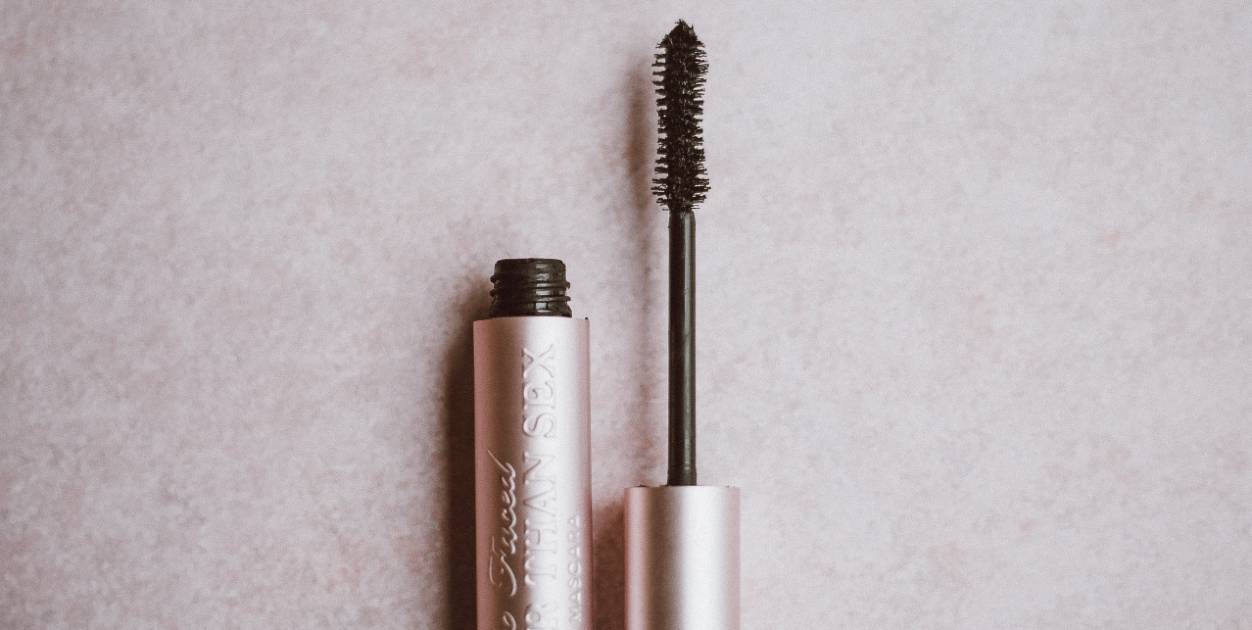Mascara

Mascara is the second most used cosmetic in the United States. But what are the ingredients actually used in our favorite mascara brands? That’s what we’re exploring in this episode.
Product Recommendations
Beautycounter
Episodes Mentioned
Listen to the PSA episode here.
Listen to the FOOD DYES episode here.
Listen to the DEODORANT episode here.
Listen to the COOKWARE episode here.
Sources
https://blog.cleanbeautybox.com
SUBSCRIBE
Subscribe on iTunes here.
Subscribe on Spotify here.
Subscribe on Google Podcasts here.
Transcript
My favorite (okay, lamest) mask joke is that the mascara industry must be booming from the pandemic. The point being that our eyes are literally the only part of our faces that get any attention anymore. I rarely put any makeup on, forget lipstick, but I’ll swipe a little mascara on my eyelashes when I want to feel fancy. But what are the ingredients actually used in our favorite mascara brands? That’s what we’re exploring in this episode.
Pre-pandemic, mascara was the second most used cosmetic in the United States — lipstick was number one. I imagine the popularity contest has changed due to “mask life” which is even more problematic given the common ingredients in conventional mascara.
I tapped into the research done by my friend and clean beauty advocate, Claire Molyneaux, founder of The Clean Beauty Box. Since the cosmetic market is largely unregulated, more on that in the PSA episode, Claire says most mascara brands on the market contain coal tar and other toxic chemicals to keep your lashes thick, long and smudge free.
I’m going to link to the list of 8 chemicals used in mascara that are harmful to your health, but I want to highlight five of them in this episode. Just to get my point across ; )
- The first one is Parabens, which is a fancy word for preservatives. There are several different types of parabens but they all are used to extend the shelf-life of your mascara. Unfortunately, these chemicals are absorbed through the tiny pores around your eyes, thus entering your bloodstream. If you’ve listened to this podcast before then you know that parabens are in virtually every conventional beauty and cosmetic product and yet they have been linked to increases in breast cancer by mimicking estrogen and causing endocrine disruption. They have also been linked to reproductive toxicity, neurotoxicity, immunotoxicity, and skin irritation.
- Synthetic dyes — if you’ve listened to the episode on Food Dyes you already know that any synthetic dye is problematic. Even if it’s absorbed through skin pores, instead of ingested, it still enters your bloodstream. In mascara, the dyes are labeled as FD&C or D&C, followed by a color and a number (e.g. FD&C Red No. 6, D&C Green No. 6). They’re believed to be toxic and carcinogenic.
- Aluminum Powder — we’ve talked about the effects of aluminum in the episodes on deodorant and cookware, and this known neurotoxin is also found in most mascaras. Long term exposure of aluminum powder can impair the body’s ability to detox mercury. This can result in making any amount of mercury that is in the body even more toxic.
- Retinyl Acetate or Vitamin A Acetate is found in many brands of mascara, and has been targeted by the EWG as an ingredient of high concern because it can cause biochemical or cellular level changes. Other health effects include developmental and reproductive toxicity, and organ system toxicity. Acetate has been prohibited and restricted in Canadian cosmetics and yet it’s still used in the United States.
- Formaldehyde is used as another preservative in mascara and is a known carcinogen.
So yeah, that’s a starting list of harmful ingredients in most mascaras. And just to reiterate my message from past episodes, this isn’t about single exposure. Most of us use mascara at least a few times a week, if not every day, so it’s the repeated, long term exposure to these toxins and chemicals that is particularly concerning.
So, if mascara is a part of your beauty routine, then I first recommend searching for your particular brand on the EWG’s SkinDeep app or on the Think Dirty app.
If you find that the mascara you’re using has a moderate to high level of concern then this episode’s “This for That” segment is a suggestion to switch your mascara to a clean beauty brand. I’ve used both Beautycounter and Ilia mascara and have loved both — no smudging issues and I get the same amount of lash extension as I did when I used Maybelline or Covergirl back in the day. I’m going to link to some of my other favorite clean mascaras, including a Black woman-owned beauty brand, in the show notes at cleanlivingpodcast.com/mascara
Thank you so much for listening to this episode of The Clean Living Podcast — I’m your host Shannon Lohr. Did you know that there’s a clean living quiz on the podcast website where you can find out your own clean living score? Just go to cleanlivingpodcast.com and scroll down to the quiz. Here’s to creating a cleaner, more sustainable world for all of us.

